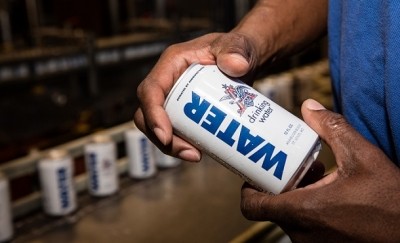Extreme weather & natural disasters across wine regions cause $10bn in annual wine losses

KIT along with other scientific institutions including Risklayer GmbH in Germany, Australian National University, Griffith University, University of Adelaide, University of New South Wales in Australia, as well as Greece and UCL in UK, examined 110,000 wineries across 131 countries that together produce 26 billion liters of wine per year.
The team of researchers studied to what extent various wine regions were affected by severe weather events and how climate change influenced the wine industry.
The global wine industry contributes $304bn to the world’s economy, according to Mordor Intelligence, but loses more than $10bn every year due to damaged assets, production losses, and lost profits caused by extreme weather events.
Despite the hazards, the wine industry continues to grow and diversify.
"Through detailed natural hazard analysis, research can help winemakers and governments alike to prepare adequately for the natural hazards that they face and to reduce losses," Dr. Daniell said.
Biggest wine producers and their threats
Italy: 4.9bn liters (2016, Organisation Internationale de la Vigne et du Vin/OIV)) - Hail, frost, earthquake
France: 4.2 billion liters (2016, OIV) - Frost, hail, storm
Spain: 3.8 billion liters (2016, OIV) - Hail (Northwest), frost, heat
USA: 2.25 billion liters (2016, OIV) - Frost, earthquake, storm
Australia: 1.25 billion liters (2016, OIV) - Frost, storm, hail, bushfire
Hailstorms are most prevalent source of damage
Hailstorms in particular have had the largest negative impact on global wine growing regions all of which experience at least one hail event per year, according to the WineRisk study.
The top five wine regions most at risk for damage caused by hail include: Mendoza, Argentina; Piedmont and the Italian Alps, Italy; Cahul, Moldova; Georgia; and Aragon, Spain.
Cold weather conditions such as hail can cause damage to the single vintage or to multiple vintages depending on the growth phase of the vines. Traditional wine countries like France and Italy have suffered the largest losses especially in Burgundy and Piedmont regions due to cold weather, the study found.
The hail losses from 2012 to 2016 in some vineyards totaled 50% to 90% of the value of the crop and caused long-term damage to many old vines.
Hail nets can save the crop in most cases, given a large hail event.
"Cost-benefit analyses generally show that the premium wines should be the ones covered by hail nets, with insurance or other cheaper methods used for other wines," Dr. Daniell said.
Combatting earthquake damage
Earthquakes can knock out the entire infrastructure of wine regions including destruction of buildings, tanks, barrels, equipment, and chemicals.
New Zealand’s Marlborough region was hit by a 7.8-magnitude earthquake in November 2016, which damaged 20% of its wine storage capacity. Winegrowing regions of Chile and the US have also endured earthquake damage in recent years.
Investing in stabilization mechanism including quake wax, zip ties or bolts can save millions of dollars in loss, according to Dr. Daniell.
Climate change: wine production shifts
Many northern and southern hemisphere wine regions may benefit from climate change, while regions closer to the equator may be lost over time, the study said.
"The English, Canadian, and Northern China wine regions will likely increase production markedly and continue to improve their market share and quality of production," Dr. Daniell predicted.
Researchers also forecast that wine regions will learn to manage climate changes by changing grape varieties or harvest times and will likely benefit from new grape strains and innovative technologies to optimize wine production.
Volcanic eruptions are most destructive force
A major volcanic event would likely cause the largest global impact to the wine industry such as the Tambora eruption in 1815 which resulted in a “year without a summer” in 1816.
However, other issues such as atmospheric changes, lack of sunlight, and global transport challenges are more immediate risks facing the wine industry, researchers said.
The study is still exploring the effects of bushfires and floods to vines.













